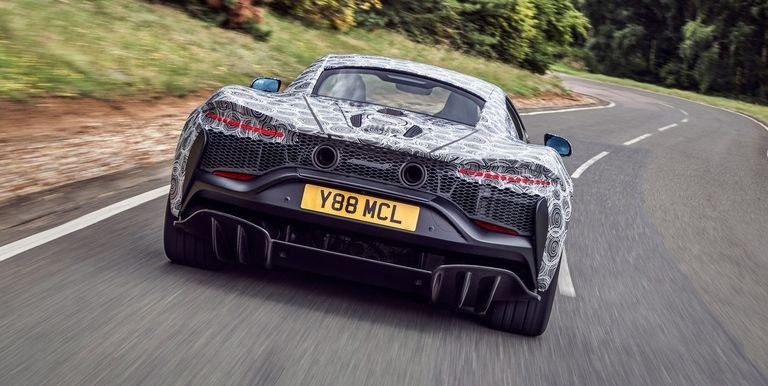McLaren Testing New V-6 Hybrid Supercar
The niche automaker is testing the Super Series replacement, which will feature a full-EV road-driving mode and a V-6 engine...

McLaren Testing New V-6 Hybrid Supercar
The niche automaker is testing the Super Series replacement, which will feature a full-EV road-driving mode and a V-6 engine.
- McLaren has released images of an upcoming High Performance Hybrid (HPH) supercar testing on public roads, a car that will replace its entry-level Super Series model.
- The carbon-fiber-bodied supercar will feature a new V-6 and a fully electric on-road driving mode.
- McLaren says it will release the new hybrid in the first half of 2021.
No part of the auto industry is immune to downsizing. McLaren has confirmed that it has begun final testing on the replacement for its entry-level Super Series model ahead of introduction next year, and also that this will feature a hybridized V-6 engine in place of the current model’s mighty V-8.
McLaren boss Mike Flewitt first told us of his plans to reduce cylinder count and add electrical assistance back in 2016, and we were actually expecting the new V-6 to be launched this year. Unfortunately, COVID-19 messed with those plans slightly. But now the company has confirmed both that it will be using a six-cylinder motor and that the new powertrain will also allow for "medium range" EV-only operation, in the same manner as the Ferrari SF90 Stradale.
While capacity is going to decrease—although unconfirmed, we believe the new motor displaces around 3.0 liters—we are not expecting overall power output to fall. Flewitt has previously promised that performance levels will be maintained as McLaren enters its brave new era, meaning we expect that even the V-6 hybrid will be able to at least match the 563-hp output of the 570S and probably add a sizable supplement of instantly accessible torque over the 443 lb-ft the outgoing car is capable of making.
The more relevant question, given McLaren's obsession with lightweighting, is how much mass the new powertrain will have to work against. The Sports Series replacement will be the first car to sit on McLaren's new Carbon Lightweight Architecture (MCLA), which is being built in the company's new factory in Sheffield, England. We have been told that this will strain the scales even less than the existing MonoCell/MonoCage structure, although Flewitt has previously told Car and Driver that he doesn't expect to be able to deliver a hybrid with no weight penalty over a conventional powertrain. It will be interesting to see how close it gets.
While the first implementation of McLaren's hybrid powertrain will be rear-driven, we are expecting the faster and more powerful models that will follow it to use an electrically powered front axle, giving all-wheel drive.
McLaren's announcement of the new car's cylinder count also confirms that we are entering a new V-6 age for junior supercars. Aston Martin is also working on a hybridized V-6 for the mid-engine supercars that will follow the V-12 Valkyrie hypercar. Maserati is also set to use a nonhybrid V-6 in the ultralight MC20, which will also spawn a fully electric version. Will buyers find such downsized powerplants as exciting as the V-8s (and even V-10s) they will still be able to find elsewhere in the market?